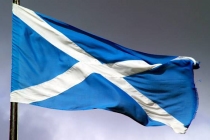Recipes for a Burns Night supper
Kindly supplied to us by Eileen from Ballantrae, South Ayrshire, Scotland
Introduction to Robert Burns and Burns Night supper
Robert Burns was born in Alloway, Scotland, on January 25 and died in Dumfries, Scotland, on July 21, 1796. He was a bard and wrote many poems, lyrics and other pieces. Some addressed political and civil issues. He is probably best known for "Auld Lang Syne", sung at New Year's Eve not only in Scotland but all around the world. He is also known as: "Rabbie Burns"; the "Bard of Ayrshire"; "Scotland's favourite son"; and in Scotland "The Bard".
The first Burns' supper was on July 21, the anniversary of his death, in Ayrshire, Scotland, in the late 1700s. The date was later changed to January 25, which marks his birthday. Burns' suppers are now held on or close to his birthday by people and organizations with Scottish origins worldwide.
In each of the following recipes, the ingredients suggested are for a meal serving four people.
- Cock-a-Leekie Soup
- Haggis with neeps (mashed turnips or swedes), tatties (mashed potatoes)
- Cranachan
Recitation of Selkirk Grace
Traditionally at the start of a Burns Supper the Selkirk Grace is recited:
"Some hae meat and cannot eat.
Some cannot eat that want it:
But we hae meat and we can eat,
Sae let the Lord be thankit.'
The parade of the haggis then follows when the haggis brought to the table with the following address to the haggis:
"His knife, see rustic labour dicht
An' cut ye up wi' ready slight'
It is at this point that the knife is used to cut into the haggis and eating starts. The beginning of both the above traditions is accompanied by bagpipe music. There are further toasts and poems during the meal, starting with 'Toast to the Lassies' by a male guest and reciprocated by a female. Other poems are recited during the meal.
Language:
- English
Recipe Celtic nation:
- Scottish





